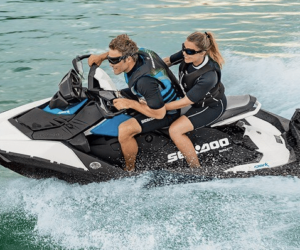Cheeses from Istria
Cheese from Istria

The richness of Istrian cheese culture
1. Istrian sheep’s cheese (Istarski Ovčji Sir)
Istrian sheep’s cheese is one of the most famous cheeses in the region. It is made from the milk of sheep that graze on the lush pastures of Istria. This milk gives the cheese an intense and aromatic flavour.
Istrian sheep’s cheese is usually matured for several months, which gives it a firm texture and a slightly salty flavour. It is often refined with a layer of olive oil, which gives it an additional flavour and a longer shelf life. This cheese is ideal as an appetiser, in combination with olives and Istrian wine, or as a special ingredient in salads.
2. Cow’s milk cheese (Istarski Kravlji Sir)
In addition to sheep’s milk cheese, cow’s milk cheese is also very popular in Istria. Istrian cow’s milk cheese has a milder flavour compared to its sheep’s milk-based counterpart and is often used as a staple in Istrian cuisine.
The maturing process of this cheese can vary from a few weeks to several months, depending on the desired texture and flavour intensity. It is available in various forms, from soft and creamy varieties to harder and more intense flavours. Istrian cow’s milk cheese is often served as table cheese or used in traditional dishes such as “fritaja” (a type of omelette).
3. Mixed cheese (Mješani Sir)
Another highlight of Istrian cheese production is mixed cheese, which is made from a combination of cow’s, sheep’s and goat’s milk. This mixture gives the cheese a complex flavour and unique texture.
Mixed cheese is often used in traditional Istrian dishes, as it harmoniously combines the flavours of the different types of milk. It is ideal as a snack or as part of a cheese platter.
4. Truffle cheese (Sir s Tartufima)
Istria is famous for its truffles, and it is no surprise that this precious ingredient also plays a role in cheese production. Truffle cheese is often made from cow’s milk and refined with pieces of white or black truffles.
The flavour of this cheese is unmistakable: the earthy, intense taste of the truffle combines perfectly with the creamy texture of the cheese to create a luxurious taste experience. Truffle cheese is particularly popular with gourmets and cheese lovers and is often served on special occasions.
5. Cheese with herbs (Sir sa Začinima)
In Istria, cheese is often flavoured with a variety of local herbs such as rosemary, thyme or basil. These herbs give the cheese an aromatic flavour and reflect the Mediterranean vegetation of the region.
Cheese with herbs is often served as an aperitif or added to various dishes to give them an extra boost of flavour. This type of cheese is a perfect example of how the nature of Istria is integrated into the local cuisine.
Traditional production methods
Natural maturation
A key aspect of Istrian cheese production is natural ripening. The cheeses are often stored in special ripening rooms where they can mature for months. During this process, the cheese develops its complex flavours and characteristic texture.
Use of olive oil
Another typical feature of Istrian cheese production is the use of olive oil. Cheese is often soaked in olive oil to intensify its flavour and extend its shelf life. This process is particularly popular with sheep’s milk cheese and truffle cheese.
Where can you buy Istrian cheese?
Istrian cheese is not only available in Istria itself, but also in many international markets. In the towns and villages of Istria, you will find numerous local markets and delicatessens offering a wide selection of regional cheeses.
For visitors who want to take the flavour of Istria home with them, local cheese dairies and farmers’ markets are the best place to buy authentic Istrian cheese. Some of the region’s most famous cheese dairies also offer online sales, so you can enjoy the unique flavour of Istria anywhere in the world.
Our summary
Cheese from Istria is a culinary treasure that reflects the rich traditions and unique nature of the region. Whether intense sheep’s cheese, mild cow’s milk cheese or luxurious truffle cheese – each variety tells its own story and offers an unrivalled taste experience. So the next time you are in Istria, don’t miss the opportunity to try these delicious cheeses and discover the true essence of the Adriatic.
































